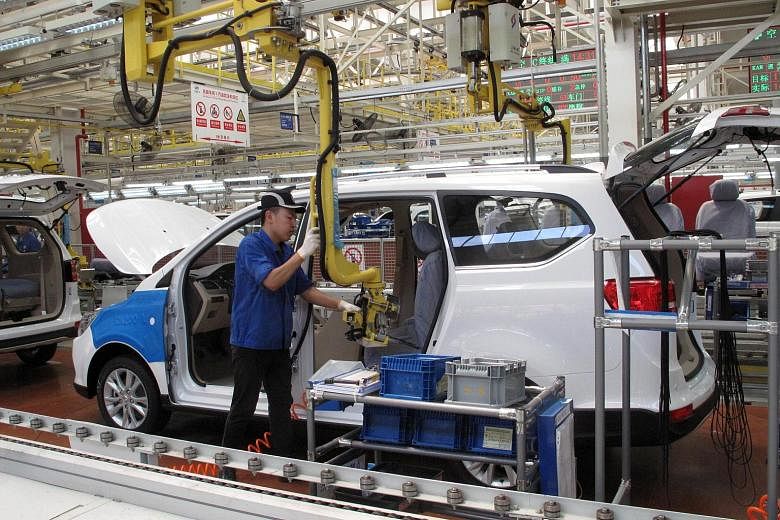SYDNEY (REUTERS) - Factories in China and Japan - the world's second and third largest economies - saw scant sign of demand recovering in July, with surveys across Asia offering only crumbs of comfort after weak growth readings in the United States and Europe.
The fitful global performance was clearly on the mind of William Dudley, a top policy maker at the Federal Reserve, who used a speech in Indonesia to urge caution on raising US interest rates.
Mr Dudley, a close ally of Fed Chair Janet Yellen, warned of negative shocks due to the unknown fallout from Britain's vote to leave the European Union, a strong US dollar, and because it was safer to delay a move with interest rates so low.
Among the slew of surveys out on Monday (Aug 1), China's official Purchasing Managers' Index (PMI) slipped a tick to 49.9 in July, inching below the 50 mark that is supposed to separate growth from contraction.
"Today's data do not bode well for GDP growth," wrote ANZ economist Louis Lam in a note. "The traditional manufacturing sector is likely to continue to face strong headwinds as efforts to reduce overcapacity continue," he added. "Thus, we expect the authorities to maintain an accommodative monetary policy."
There was better news from the private Caixin version of the PMI, which covers a greater share of smaller firms, where the index picked up to 50.6 in July, from 48.6 in June. That was the first expansion in in 17 months.
Also promising was China's huge services sector, where the official measure showed a slight pick up in activity in July. Beijing is counting on a transformational shift to services to make up for persistent woes in manufacturing.
The cheer did not extend to Japan where a painfully high yen led new export orders to shrink at the fastest pace in more than 3-1/2 years, according to IHS Markit/Nikkei. While the overall PMI nudged up to 49.3 in July, from 48.1 in June, it remained in contractionary territory.
Stocks in Japanese exporters were already under fire after the Bank of Japan decided against bold monetary easing last week, confounding expectations and sending the yen flying higher.
The BoJ will now undertake a review of its entire easing campaign ahead of the next policy meeting on Sept. 21.
"This may raise hopes for something punchier," said HSBC economist, Frederic Neumann. "But we counsel caution: to us, the decision suggests that the BoJ has reached the limits of its current policy framework."
Weak domestic demand had a deadening effect in South Korea, where the Nikkei/Markit PMI fell to 50.1 in July, from 50.5. Official trade figures also showed exports from the electronics powerhouse fell for the 19th straight month in July, and fell at the fastest annual rate in three months.
One bright spot was India where factory activity hit a four-month high of 51.8 in July, buoyed by firmer demand at home and abroad.
Surveys from Europe and the US are due later Monday and would have to be unexpectedly robust to make up for the downbeat reading on economic growth released last week.
The US eked out an annualised rise of just 1.2 per cent in gross domestic product (GDP) over the second quarter, a major miss to forecasts that led investors to further lengthen the odds on a rate hike this year.

